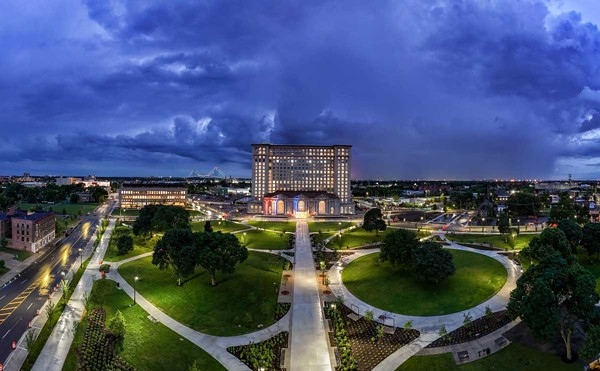Detroit aquarium idea floated, only to find upstream fight
[
{
"name": "GPT - Leaderboard - Inline - Content",
"component": "35519556",
"insertPoint": "5th",
"startingPoint": "3",
"requiredCountToDisplay": "3",
"maxInsertions": 100
}
]
An idea proposed just two weeks ago for an aquarium on the Detroit riverfront already seems to be facing critical discussion from Detroit leaders that may find it swimming upstream for a home.
The topic first bubbled up May 1, when a Detroit Free Press article revealed that Detroit Zoo honchos had long been considering building a state-of-the-art aquarium on the Detroit riverfront. Detroit Zoo CEO Ron Kagan had suggested that the site of the old Ford Auditorium might be ideal, and told the newspaper that the facility could draw 1 million paying visitors annually.
"Not so fast" is apparently the message of Detroit Mayor Mike Duggan and former DEGC head George Jackson. In what might be nominated for understatement of the year, The Detroit News reported, "Most major developments on city-owned land don’t happen without early support from Duggan and his planning and economic development teams."
In that same article, Jackson said, “You don’t want to put it where when you leave the building, you have to walk across Jefferson Avenue.” (Yes, you heard that right: One of the chief people guiding development in Detroit for decades believes that when you attract 1 million guests per year to a facility, you don't want people actually walking across a major thoroughfare.)
And when Jackson added, “You want an expanded parkland near it, with an outdoor area people could enjoy," he likely meant "parking lot," not parkland. After all, the biggest aquarium in the state right now, Auburn Hills' SEA LIFE Michigan Aquarium, has at least 15 acres of parking within a five-minute walk of the entrance. Now that's some Pure Michigan right there.
By the way, you'll notice that some larger aquariums in bigger cities don't even have that much parking. For instance, the Shedd Aquarium in Chicago gets about 2 million visitors a year, and for parking mostly relies on the 6-acre Adler Lot nearby. How is that possible? Simple. Chicago has several mass transit stops within a half-mile that allow you to get there by regional rail, elevated, bus, and even bicycle-friendly pathways through Grant Park that lead right to the facility.
But that would require regional solutions that put public attractions at the end of actual public transportation systems ... and officials that trust people are able to walk across a street to get somewhere.
Stay on top of Detroit news and views. Sign up for our weekly issue newsletter delivered each Wednesday.






